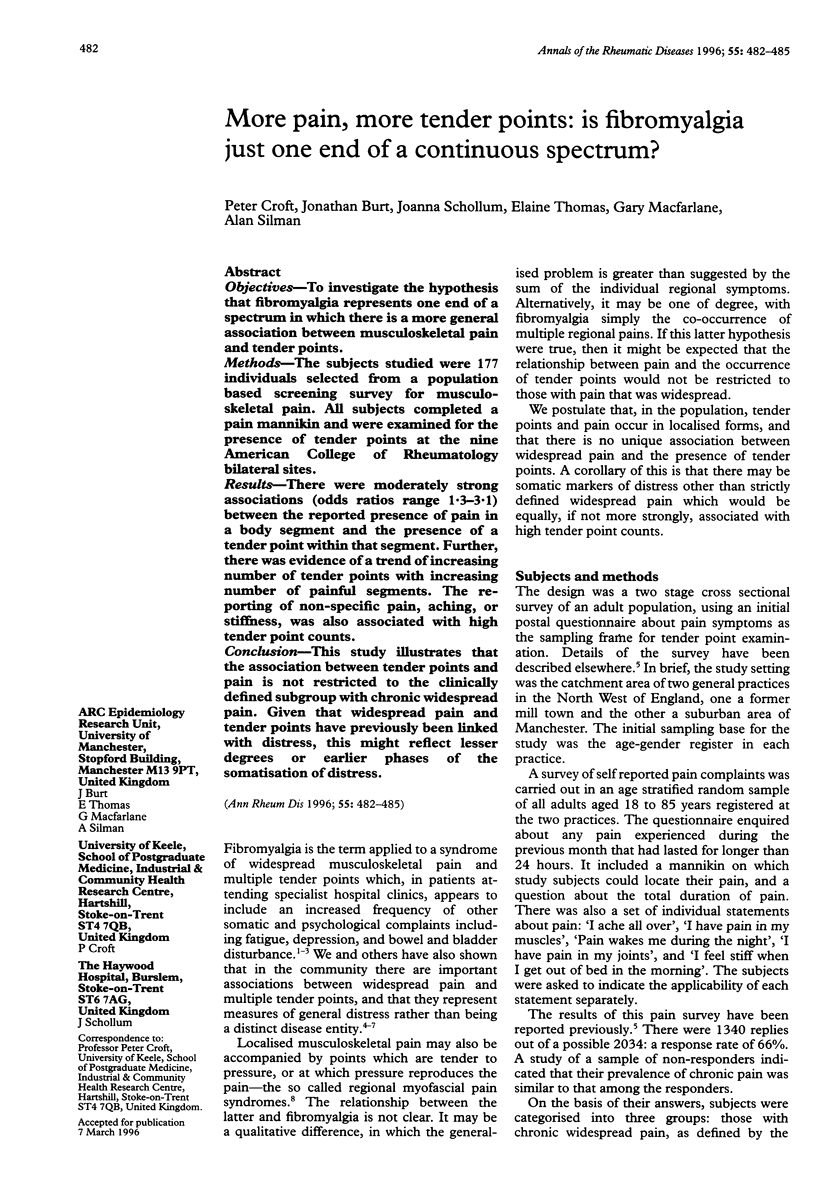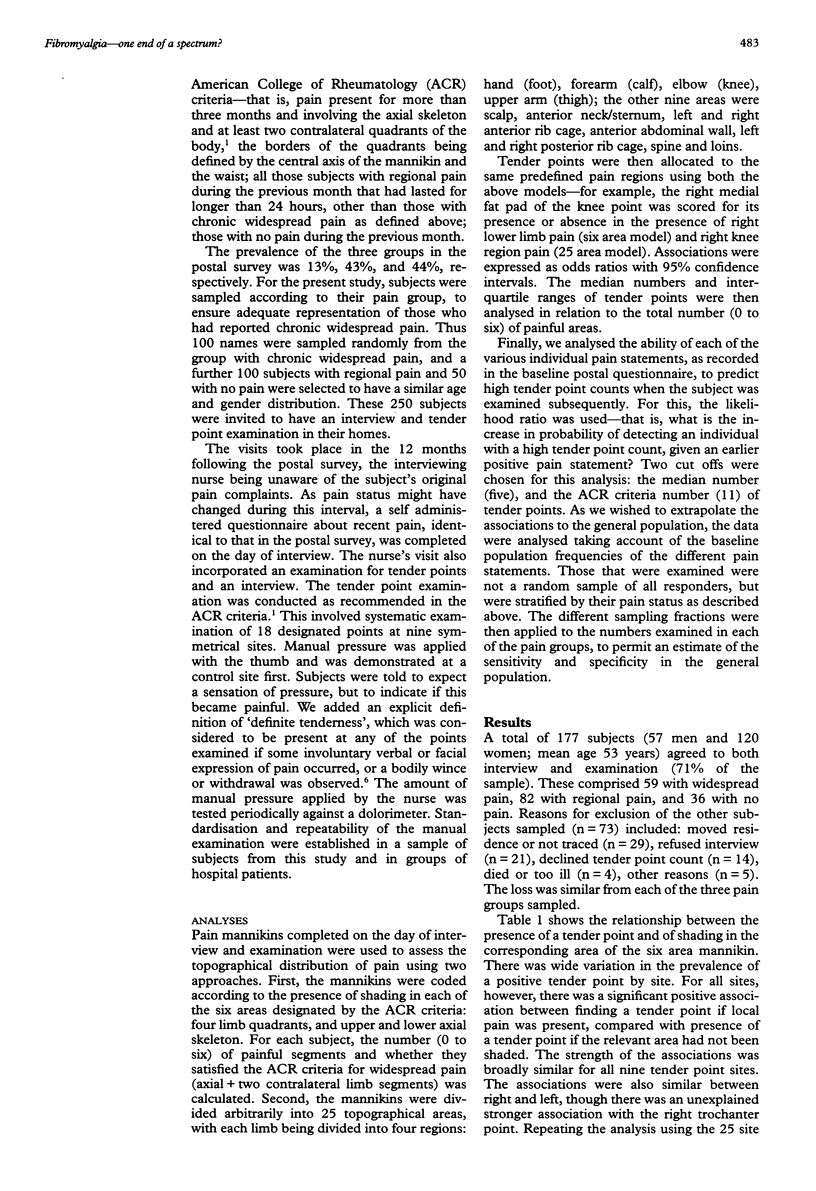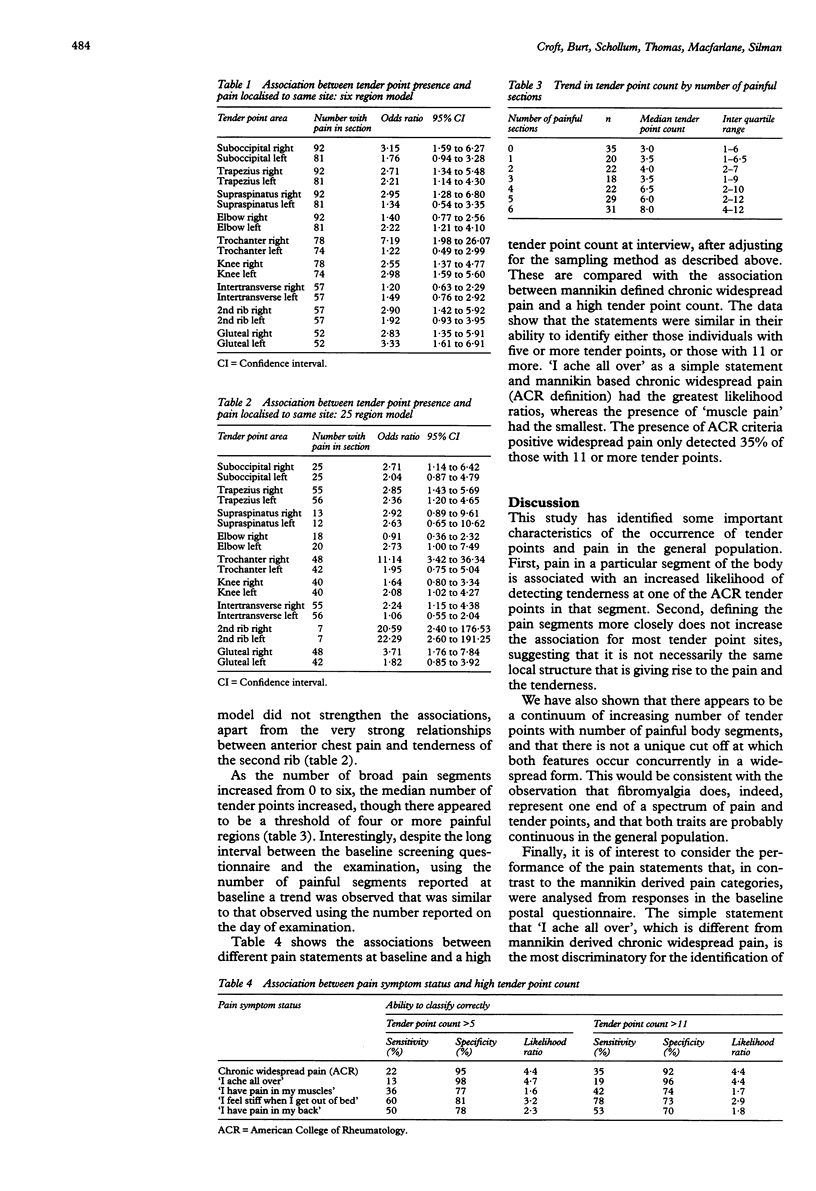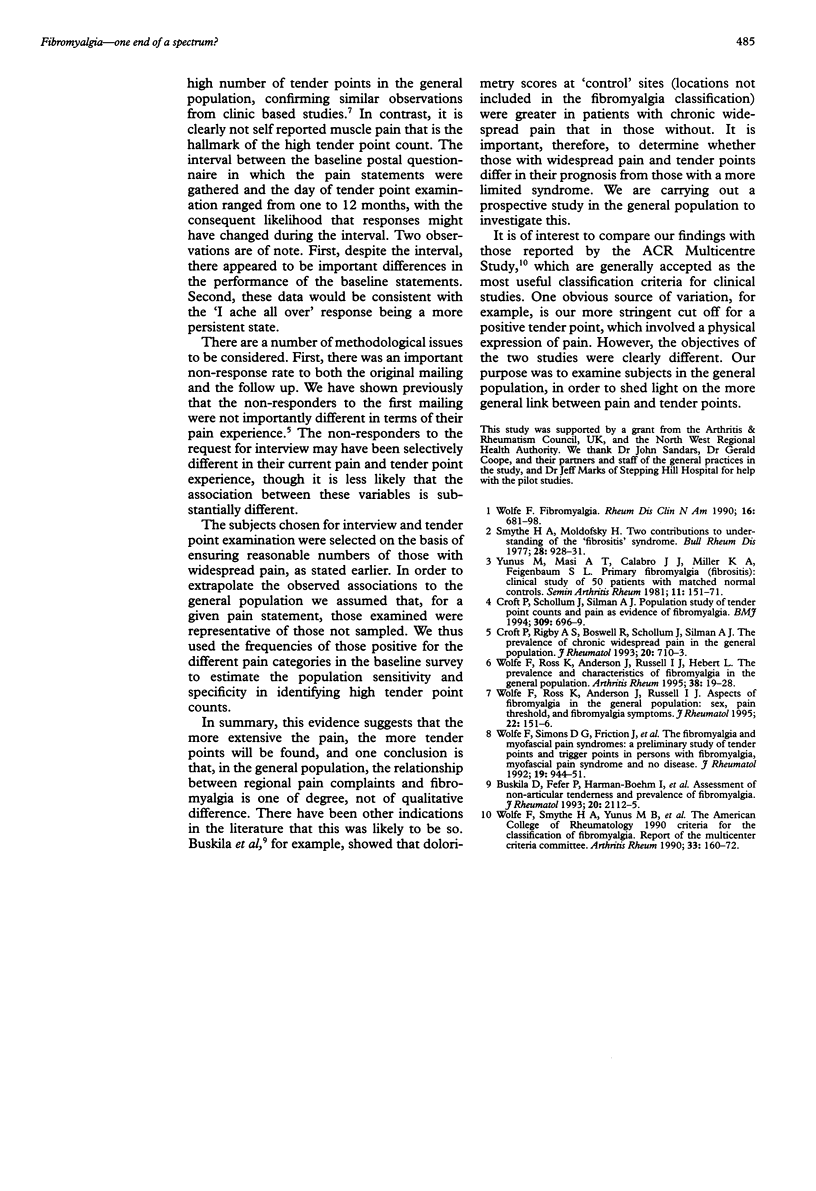Abstract
OBJECTIVES: To investigate the hypothesis that fibromyalgia represents one end of a spectrum in which there is a more general association between musculoskeletal pain and tender points. METHODS: The subjects studied were 177 individuals selected from a population based screening survey for musculoskeletal pain. All subjects completed a pain mannikin and were examined for the presence of tender points at the nine American College of Rheumatology bilateral sites. RESULTS: There were moderately strong associations (odds ratios range 1.3-3.1) between the reported presence of pain in a body segment and the presence of a tender point within that segment. Further, there was evidence of a trend of increasing number of tender points with increasing number of painful segments. The reporting of non-specific pain, aching, or stiffness, was also associated with high tender point counts. CONCLUSION: This study illustrates that the association between tender points and pain is not restricted to the clinically defined subgroup with chronic widespread pain. Given that widespread pain and tender points have previously been linked with distress, this might reflect lesser degrees, or earlier phases of the somatisation of distress.
Full text
PDF



Selected References
These references are in PubMed. This may not be the complete list of references from this article.
- Buskila D., Fefer P., Harman-Boehm I., Press J., Neumann L., Lunenfeld E., Gedalia A., Potashnik G., Sukenik S. Assessment of nonarticular tenderness and prevalence of fibromyalgia in hyperprolactinemic women. J Rheumatol. 1993 Dec;20(12):2112–2115. [PubMed] [Google Scholar]
- Croft P., Rigby A. S., Boswell R., Schollum J., Silman A. The prevalence of chronic widespread pain in the general population. J Rheumatol. 1993 Apr;20(4):710–713. [PubMed] [Google Scholar]
- Croft P., Schollum J., Silman A. Population study of tender point counts and pain as evidence of fibromyalgia. BMJ. 1994 Sep 17;309(6956):696–699. doi: 10.1136/bmj.309.6956.696. [DOI] [PMC free article] [PubMed] [Google Scholar]
- Smythe H. A., Moldofsky H. Two contributions to understanding of the "fibrositis" syndrome. Bull Rheum Dis. 1977;28(1):928–931. [PubMed] [Google Scholar]
- Wolfe F., Ross K., Anderson J., Russell I. J. Aspects of fibromyalgia in the general population: sex, pain threshold, and fibromyalgia symptoms. J Rheumatol. 1995 Jan;22(1):151–156. [PubMed] [Google Scholar]
- Wolfe F., Ross K., Anderson J., Russell I. J., Hebert L. The prevalence and characteristics of fibromyalgia in the general population. Arthritis Rheum. 1995 Jan;38(1):19–28. doi: 10.1002/art.1780380104. [DOI] [PubMed] [Google Scholar]
- Wolfe F., Simons D. G., Fricton J., Bennett R. M., Goldenberg D. L., Gerwin R., Hathaway D., McCain G. A., Russell I. J., Sanders H. O. The fibromyalgia and myofascial pain syndromes: a preliminary study of tender points and trigger points in persons with fibromyalgia, myofascial pain syndrome and no disease. J Rheumatol. 1992 Jun;19(6):944–951. [PubMed] [Google Scholar]
- Wolfe F., Smythe H. A., Yunus M. B., Bennett R. M., Bombardier C., Goldenberg D. L., Tugwell P., Campbell S. M., Abeles M., Clark P. The American College of Rheumatology 1990 Criteria for the Classification of Fibromyalgia. Report of the Multicenter Criteria Committee. Arthritis Rheum. 1990 Feb;33(2):160–172. doi: 10.1002/art.1780330203. [DOI] [PubMed] [Google Scholar]


